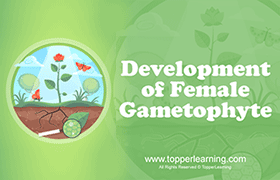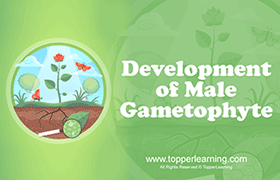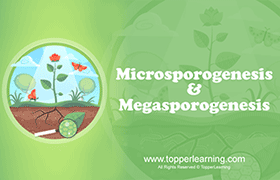CBSE Class 12-science Answered
Trace
the development of microsporocyte in the anther to a mature pollen grain.
Asked by Topperlearning User | 12 Jun, 2014, 10:07: AM
As the anther develops, the cells of the sporogenous tissue undergo meiotic divisions to form microspore tetrads. As each cell of the sporogenous tissue is capable of giving rise to a microspore tetrad, each one is a potential pollen or microspore mother cell. The process of formation of microspores from a pollen mother cell (PMC) through meiosis is called microsporogenesis. As the anthers mature and dehydrate, the microspores dissociate from each other and develop into pollen grains. Inside each microsporangium, several thousands of microspores or pollen grains are formed that are released with the dehiscence of the anther.
Answered by | 12 Jun, 2014, 12:07: PM
Concept Videos
CBSE 12-science - Biology
Asked by marvellouskyndiah | 16 Jun, 2023, 07:03: AM
CBSE 12-science - Biology
Asked by adarshraj0646 | 15 Jul, 2021, 08:24: PM
CBSE 12-science - Biology
Asked by kaziryan.05 | 04 Jul, 2021, 12:02: AM
CBSE 12-science - Biology
Asked by begomhamida567 | 12 Jun, 2021, 04:52: PM
CBSE 12-science - Biology
Asked by edwinbinoy48 | 25 Jul, 2020, 05:05: PM
CBSE 12-science - Biology
Asked by nijalingappabiradar906 | 07 Jun, 2020, 07:30: PM
CBSE 12-science - Biology
Asked by Debdulal | 08 Apr, 2020, 01:46: PM
CBSE 12-science - Biology
Asked by pardeepkumar2281 | 31 Jan, 2019, 11:38: PM
CBSE 12-science - Biology
Asked by pardeepkumar2281 | 31 Jan, 2019, 11:36: PM
CBSE 12-science - Biology
Asked by jhajuhi19 | 21 Dec, 2018, 01:23: PM




